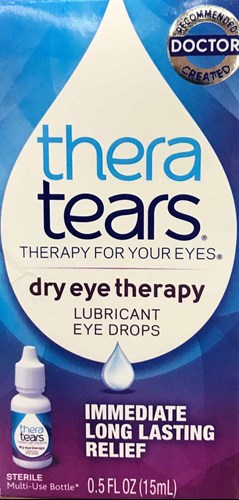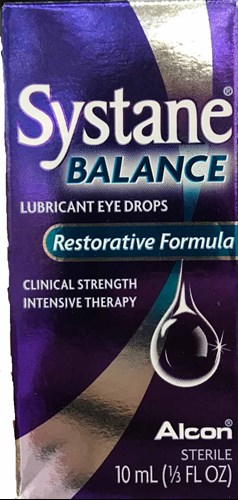What is the best eye drop for dry eyes?

Have you ever felt like something was in your eye when you know there wasn’t? Have your eyes ever burned towards the end of the day? Does your vision start to blur after reading for an extended period of time? If you have answered yes to any of these questions, you most likely have dry eyes.
Dry eyes are one of the most common conditions I see in my ophthalmology practice. Dryness can range from annoying to debilitating.
As an ophthalmologist and cornea specialist, I am often asked, “What is the best type of artificial tear for dry eyes?” Today I am going to discuss the various types of artificial tears, as well as guide you through which products you should avoid.
There are many drops on the market that are advertised for “redness relief.” Just as the companies proclaim, they do relieve redness. However, their effect is only temporary, and a few hours later the redness returns. With continued use of these drops, the eyes become addicted to the drops. Once discontinued, a rebound effect is activated that causes the redness to return with vengeance. Artificial tears that say “for redness” or have the ingredients “tetrahydrozoline HCL” or “naphazoline” should be avoided.

There are three main categories of drops for dry eyes: tears, gels and ointments, and gel drops. Each category has positive and negative aspects to it. Tears give immediate relief, but they evaporate very quickly. Gels and ointments last a long time, however, the downside is that they can blur your vision. This is caused because you are physically looking through the ointment. To visualize how gels and ointments impair your vision, imagine trying to look through a windshield which has a smudge on it. Gel drops are in between a tear and a gel/ointment. They do not blur the vision as much as an ointment, but they last longer than an artificial tear.
One category of drops is not better than another. Your choice depends on the activities you would like to partake in after use. For example, if you are going to read or watch a movie, an ointment would not be the best choice. Ointments are preferred before sleeping because they maintain moisture on the eye for the night. Ointments do cause blurry vision but who needs vision when your eyes are closed?
Another main differentiation to consider when selecting artificial tears are those with preservatives, and those without preservatives. The most effective artificial tears are the ones without preservatives. How do you know if a drop has preservatives? The bottle will say “preservative free” on it. Preservatives can be toxic to the eye and can actually cause additional dryness if used more than 4 times a day. If you are planning on taking the drops less than 4 times a day, it does not matter if they have preservatives or not. Before purchasing, think about how often you will administer the product. Many may wonder if there is a downside to taking drops with without preservatives. One drawback which consumers encounter is that the preservative free drops are typically more expensive. A second negative aspect is that the bottle can be less convenient. Preservative free drops are often housed in individual disposable vials. Though the vials are easy to fit in your pocket, some vials are designed for one time use only.
Most major brands of artificial tears such as Systane or Refresh provide multiple products for various causes of dry eyes. For example, Systane Balance and Refresh Advanced are designed for patients who have dry eyes associated with lid conditions. This includes disorders which cause a deficiency of lipids or oils in their tear film. Unless you are seeing an ophthalmologist or an optometrist for dry eyes, I believe that these may be unnecessary given the added expense for these types of drops.


In conclusion, my advice is to try multiple brands of artificial tears to see what brand and type you like best. Remember to stay away from products marketed for redness relief, and think about what activities you will be participating in before selecting tears, gels, or ointments.


